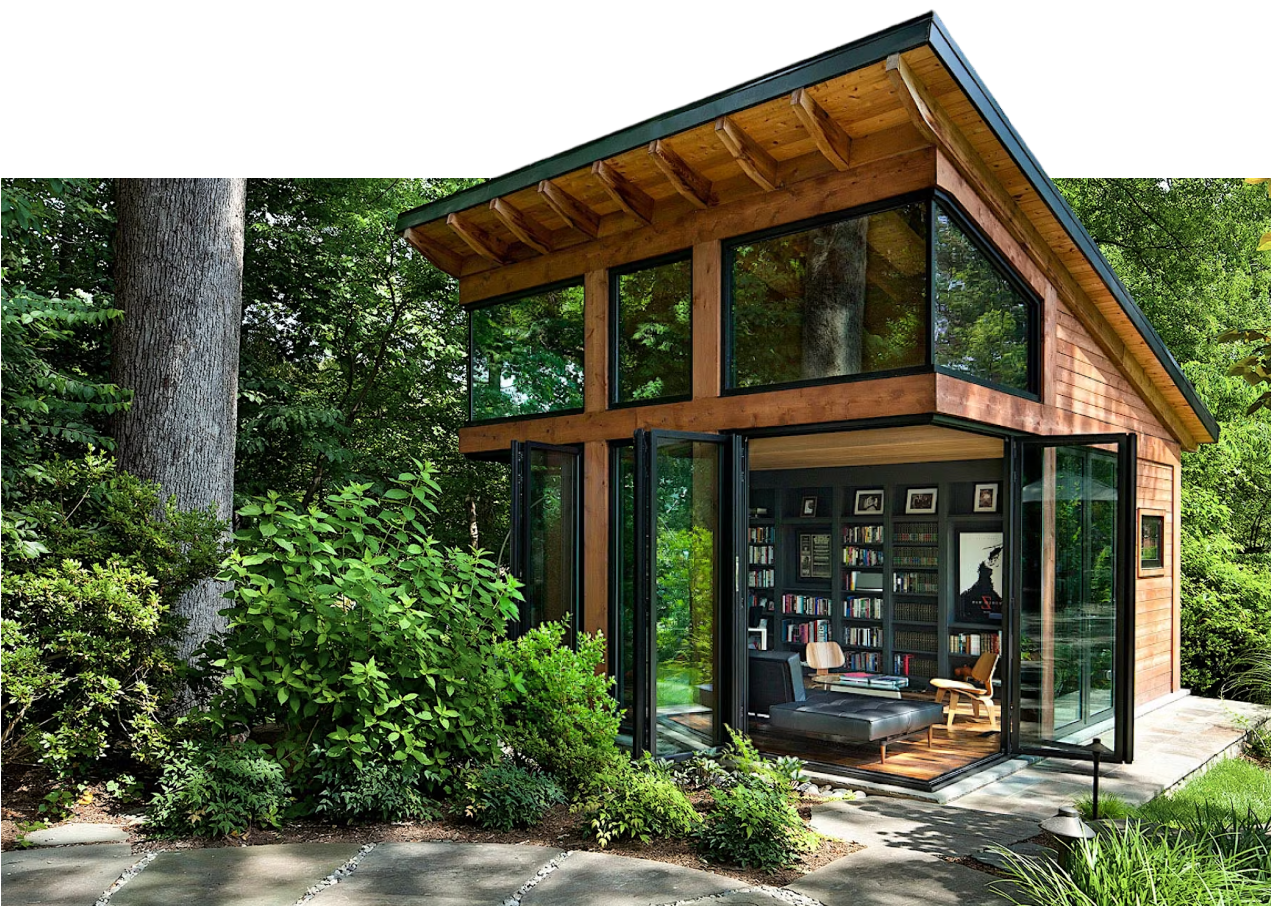The leading source for ADU related information
Everything You Need to Know About ADUs in California
Whether you’re looking to generate income, expand your living space, or add value to your property, we’re here to guide you every step of the way.

Save Money
Reduce costs with proven methods.

Build Faster
Streamline approvals and timelines.

Expert Support
Access guidance from seasoned pros.

Avoid Mistakes
Prevent costly errors
with ease.

Explore the Pros and Cons of Building ADUs
Explore the Pros and Cons of Building ADUs
It might surprise you to learn that, according to World Population Review, you can expect to pay around $785,000 for a new home in California. It's commonplace in California to build accessory dwelling units (ADUs), but not everyone understands what the process entails. These projects require careful planning to avoid potential issues.
Below, we'll walk through a guide on building ADUs so you know exactly what to expect from start to finish. You'll also avoid countless complications you may have otherwise encountered. Let's take a closer look at what to consider.
Pro: Additional Living Space
Adding an ADU to your property can create a new living area for family or guests. Many homeowners find it especially useful for accommodating aging parents or young adults seeking independence.
Having a private space close to home provides flexibility and convenience for changing family needs. With proper ADU design ideas, the space can be tailored to match the main home's aesthetic. A well-designed ADU enhances comfort while also maximizing property space effectively.
Con: High Construction Costs
Building an ADU can require significant financial investment, often deterring some homeowners. Expenses can quickly add up without proper ADU cost planning, and these include:
Permits
Materials
Labor
It's essential to account for unforeseen expenses, as well, such as utility upgrades and foundation work. When overlooked, you run the risk of paying substantially more than you anticipated.
Budget overruns are common when not working with experienced contractors or detailed estimates. Careful research and planning can help mitigate some of the financial strain, but initial costs remain a hurdle for many.
Pro: Rental Income Opportunities
An ADU offers a unique opportunity to generate passive income by renting out the space. Homeowners can take advantage of local demand for affordable housing while earning extra money.
A well-constructed ADU also attracts long-term tenants due to its independence and privacy. Beyond rental income, the property's value can increase significantly, making it a wise investment. Many find that the added income outweighs initial construction expenses over time.
Con: Permit and Zoning Challenges
Obtaining the necessary permits and meeting zoning requirements can be a complex process. Local regulations often vary, requiring detailed knowledge of what is allowed in specific neighborhoods. Without expert guidance, homeowners may face delays or even denials during the permitting process.
Some areas impose strict limitations on ADU size or use, complicating construction further. Navigating these hurdles can be time-consuming and frustrating, especially for first-time builders.
Pro: Increased Property Value
An ADU often boosts a home's resale value significantly, making it a smart long-term investment. Buyers see ADUs as versatile spaces, offering rental potential or additional living arrangements.
Homes with ADUs tend to sell faster and attract more competitive offers in real estate markets. Beyond monetary gains, the added space often makes a property stand out among similar homes. ADU construction tips like these can ensure the addition enhances the overall property appeal.
Con: Maintenance Responsibilities
Owning an ADU comes with ongoing maintenance tasks that require time and money. Additional plumbing and structural elements mean more potential issues to manage. Unexpected repairs or wear and tear can create additional costs over the years, so having a maintenance plan in place is crucial to avoid long-term headaches.
Pro: Sustainable Housing Option
Building an ADU promotes efficient use of land and resources, making it an eco-friendly choice. Smaller living spaces consume less energy for:
Heating
Cooling
Daily operations
Sustainable materials and energy-efficient appliances can further reduce the environmental footprint of an ADU. The addition of green features like solar panels can transform an ADU into a model of modern, sustainable living. Homeowners looking for ADU benefits often appreciate its contribution to a more sustainable future.
Con: Potential Privacy Concerns
Having an additional dwelling on the property may reduce the sense of privacy for homeowners. Sharing outdoor areas like driveways can sometimes feel intrusive.
For those renting out the ADU, interactions with tenants might become a frequent occurrence. Proper ADU design ideas (such as strategic landscaping or fencing) can help address these concerns. However, privacy challenges are an inevitable trade-off for the convenience and income an ADU provides.
Pro: Flexible Living Arrangements
An ADU offers unmatched versatility, serving as a:
Guest suite
Home office
Rental unit
Families with diverse needs often benefit from the adaptability of this extra space. Elderly parents can enjoy proximity to loved ones without sacrificing independence.
Young adults can transition into adulthood with their own private quarters. Few home additions provide the same level of flexibility for changing life circumstances.
Con: Limited Yard Space
Adding an ADU often requires sacrificing outdoor areas, such as gardens or recreational spaces. Smaller properties may feel especially cramped after construction is complete. Finding ways to maintain outdoor usability becomes essential, especially for families who value open areas.
Creative landscaping or multi-functional yard designs can help alleviate some of these concerns and help you maximize property space. Despite these efforts, the loss of yard space remains a downside for many homeowners.
Pro: Boost to Local Housing Supply
ADUs contribute to addressing housing shortages by adding affordable living options in established neighborhoods. Unlike large apartment complexes, ADUs blend seamlessly into residential areas, preserving the local character. Many cities encourage ADU construction as a solution to urban housing challenges.
Homeowners who build ADUs often take pride in contributing to their community's housing needs. Having this balance between growth and tradition makes ADUs a unique and valuable addition.
Con: Potential HOA Restrictions
Homeowners associations often have strict rules regarding property modifications, which may limit ADU construction. Some associations ban ADUs entirely, while others impose strict guidelines on size or design. Navigating these rules can add time and frustration to the planning process.
Homeowners should consult their HOA early to understand what is permitted before committing to an ADU. Failing to comply with HOA restrictions can lead to fines or forced removal of the structure.
Pro: Long-Term Financial Benefits
Despite high initial costs, an ADU can provide lasting financial returns for homeowners. Rental income and energy savings contribute to its appeal as a long-term investment.
Many find that ADUs pay for themselves over time through consistent income streams. Strategic ADU cost planning ensures these financial benefits are maximized without overspending during construction. For homeowners thinking long-term, ADUs often prove to be a sound financial choice.
Con: Extended Construction Timelines
ADU construction projects often take longer than expected due to various delays. Securing permits and coordinating contractors can extend the timeline significantly.
Unexpected setbacks, such as weather or labor shortages, may push completion dates even further. Longer timelines can disrupt daily life, especially for homeowners living on-site during construction. Careful scheduling and contingency planning are essential to minimize delays and manage expectations effectively.
Finding the Right Contractor
To get the best results for your project, it's crucial to work with a reputable professional. However, not all are created equal. Let's take a closer look at what attributes to consider.
Experience in Similar Projects
A contractor with experience in similar projects can better understand the unique challenges of your build. They are likely to be familiar with the materials, techniques, and potential hurdles that may arise. Checking their portfolio or previous work gives a clear picture of their expertise.
An experienced professional will often offer creative solutions or alternatives to improve the outcome. Their familiarity with the process ensures the project runs smoothly from start to finish.
Strong Communication Skills
Clear communication is key to a successful working relationship with your contractor. They should be able to listen to your ideas and provide feedback in a way that fosters collaboration.
Regular updates on the project's progress help avoid misunderstandings and keep everyone aligned. A contractor who answers questions thoroughly and promptly is easier to work with. Strong communication builds trust and ensures your vision is accurately executed.
Proven Track Record of Quality Work
A contractor's reputation says a lot about their ability to deliver quality work. Positive reviews or testimonials from past clients highlight their reliability and attention to detail. Visiting completed projects can also give you confidence in their craftsmanship.
Contractors with a strong track record often take pride in their work, ensuring high standards are maintained. Asking for references and following up with them provides valuable insight into their professional integrity.
Transparency in Pricing and Contracts
A transparent contractor will provide a detailed cost breakdown, helping avoid hidden fees or unexpected expenses. Reviewing the contract carefully ensures that all terms and deliverables are clearly outlined.
Contractors who are upfront about potential price fluctuations are more trustworthy. Clear pricing allows you to plan your budget effectively without surprises. Transparency in contracts protects both parties and sets the foundation for a positive working relationship.
Building ADUs Is Worth It
Although building ADUs has both pros and cons, the ends often justify the means. The info in this guide will help determine if this type of project is right for you.
ADU Help Center is your premier resource for accessory dwelling unit (ADU) projects, offering expert guidance to save homeowners an average of $30,000 per build. Stay informed with the latest ADU construction tips, design ideas, and cost-planning strategies to maximize your property's potential. You can sign up today to learn more about how we can help.
Take the guesswork out of ADU development and start building with confidence.
Save Thousands: Learn proven strategies to cut costs and avoid expensive mistakes—our members save an average of $30,000 per project.
Expert Guidance: Get step-by-step coaching from seasoned professionals with years of experience in ADU development.
Faster Approvals: Navigate California’s complex ADU laws and permitting process with ease, saving time and frustration.
Tailored Resources: Access a network of trusted contractors, suppliers, and tools to streamline your project.
Community Support: Join a like-minded group of homeowners and developers who share insights, tips, and encouragement.

Maximize Your Property’s Potential
Learning about ADUs empowers you to turn unused space into a steady source of income. Whether it’s a rental unit, a guest house, or a workspace, ADUs can significantly boost your property’s value while providing financial freedom.
Build Wealth Through
Smart Development
Learn how ADUs can increase your property’s value and create long-term financial security for you and your family.
Create Housing for
Loved Ones
Design a comfortable, private space for family members or guests while keeping them close to home.
Contribute to
Affordable Housing
Be part of the solution by creating accessible, affordable housing options in your community while benefiting financially.
Tap Into Your
Property’s Value
Transform underutilized space into a high-performing asset that adds purpose and value to your property.
Don't Just Take Our Word for It
Hear from our community members about how our coaching has equipped them with the knowledge and support needed to successfully navigate their property development projects and achieve their goals.

Why You Can Trust Us

Proven Success
Our team has helped countless homeowners navigate the ADU process, saving time, money, and stress.

Industry Leaders
With deep knowledge of California’s ADU laws and regulations, we stay ahead of the curve to provide you with the most accurate and up-to-date information.

Hands-On Experience
We’ve been involved in hundreds of ADU projects, from design to completion, giving us the expertise to guide you every step of the way.

Tailored Solutions
No two properties are the same. We provide personalized advice and strategies to meet your unique needs and goals.


